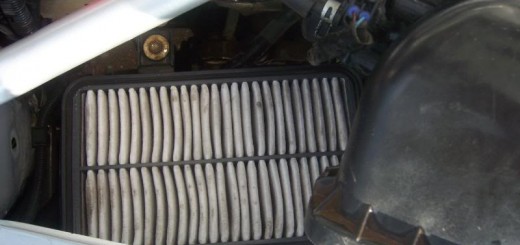Removing the old vents
First of all you need to remove the actual plastic vent from your car.
It is held in place by three clips along the front edge and two protruding clips/lips, one top and one bottom. All of these clips are designed to be pulled apart, so I’m afraid its just a case of brute force whilst taking care of the surrounding body work.
The pic below shows where the clips are located under the plastic trim

Its best to use a flathead screwdriver that has been covered with masking tape to protect the surrounding paint work. I also rolled up as piece of rag to use as a fulcrum on which to lever.
Start easing up the plastic intake cover along the edge that is closest to the front of the car, until you can get your fingers in to take over from the screwdriver. (I found the bottom lifted easiest)
Be careful not to let any of the three clips fall back into the interior of the wing as they would be a bugger to get back out. I found that the clips stayed in place on the car, they expand on the inside to hold them in place. I removed them by pinching the clip with a pair of pliers whilst easing them out. (this is probably where you may loose them into the wing if your not careful)
Here’s a pic of a pre-facelift Roadster with the vents removed

The black area you can see by the thumb is the drain outlet, this is where water exits when it goes down the side of the soft top, its worth lifting up the rubber flap and cleaning here whilst you have access to ensure that no debris has entered and blocked the drain
Meshing
First of all I cut out the black plastic mesh effect bits being careful not to leave any indentations or raised areas. The mesh is applied from the rear so that it will look nice and neat from the outside.
I cut the mesh approx 1/2″ bigger than the hole (scissors) and snipped it around the edges (1/2″) to enable me to bend it over all around the piece. Once I was happy that it was all ready, inc a slight bend to fit the curve of the vent, I taped it in place with two bits of masking tape.
Fixing it in place I bonded it on with ‘Tigerseal’. (you can use ‘no nails’ if you don’t have tigerseal or U-Pol seam sealant) these are mastic type sealants that dry hard but still remain semi flexible.
Try to keep the whole thing as neat and compact as you can as when you come to refit the vent you are restricted with space. whilst you’ve got the vent off, pop outside to your car and have another look at where it is going to have to sit to give yourself an idea of the requirements.
Once dry (next day) it was just a case of putting them back in remembering to put the clips back on the vent ready for the next stage. The easiest way is to slide the rear edge in first and then push the front edge in so that the clips ‘snap’ into place. You will also need to ensure that the top and bottom flaps go inside the wing. If they don’t at first you can lift out the vent with your fingers and push the flaps in with a flat bladed screw driver.

This documentation in no way replaces the Toyota MR2 Repair Manuals. The purpose of this content is only to provide supplementary information to fellow MR2 enthusiasts. Midship Runabout and its contributing authors will not be held responsible for any injury or damages that may occur as the result of practicing any of the methods or procedures described within this website. Article and photo submissions are property of the contributing author.

